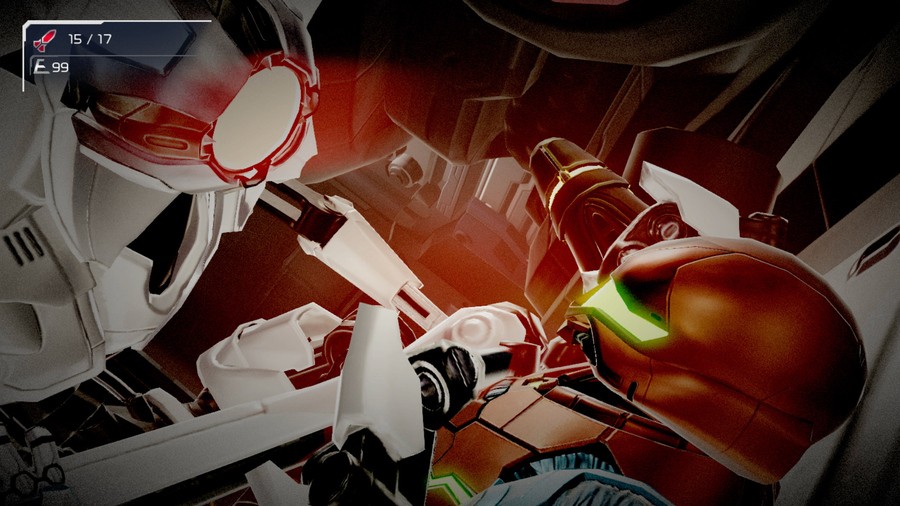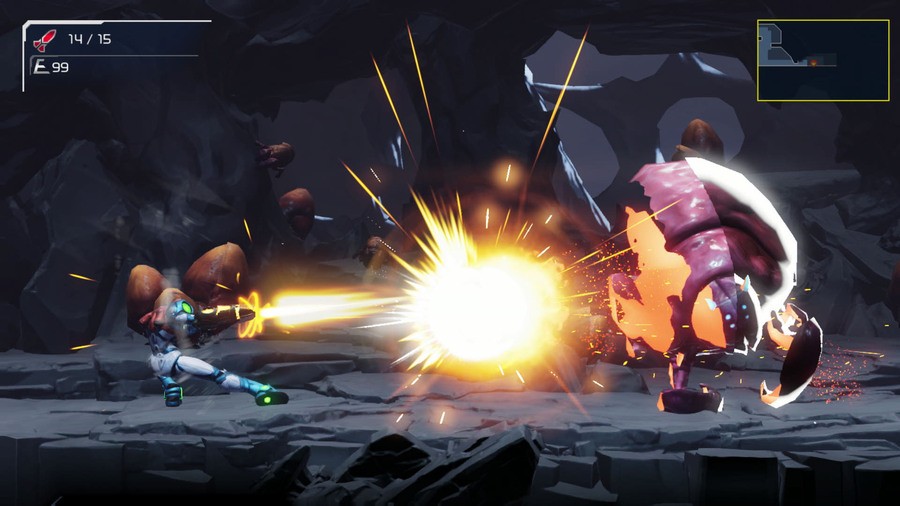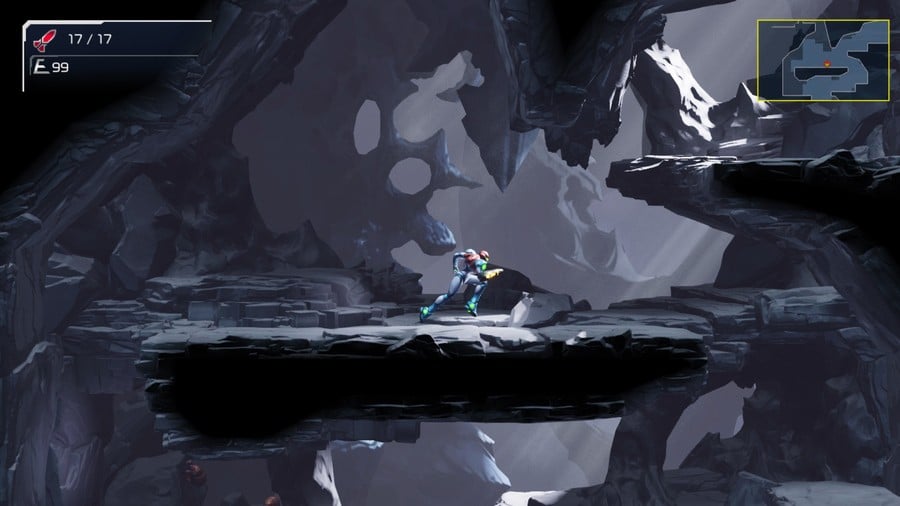With the announcement of Metroid Dread, a brand new 2D entry in the 35-year-old franchise that lends its name to an entire genre, the majority of reactions we’ve seen online have been overwhelmingly positive. As you may have noted with our rather comprehensive coverage since the game’s E3 reveal, we’re definitely in the positive camp; it is, after all, a brand new 2D Metroid coming 19 years after the last brand new installment, and it looks fantastic.
We have noticed, however, a small contingent of discontented gamers (unusual, we know!) questioning not only the involvement of developer MercurySteam, Nintendo’s partners with on this project, but also Dread’s $60 price tag.
From our point of view, both criticisms feel very odd. MercurySteam surely passed its Metroid ‘test’ with flying colours with the incredible Metroid: Samus Returns on 3DS. We love that game — the only real issue it suffered from was a late arrival on a system very much in Switch’s shadow at the time.
And the second point regarding price? Needless to say that everyone’s entitled to their opinion, but from our perspective it’s something of a non-argument. All evidence indicates that Metroid Dread is absolutely the type of full-fat meaty release we’d expect to pay full price for.
Let’s look at just a few reasons why that’s the case…
It’s a new Metroid game, innit
In terms of sales, Metroid certainly isn’t a marquee name that draws in millions of players — not in the way that Mario or Zelda does. It does alright for itself (the latest estimates put series sales at just over 18 million copies total), and it’s always been more popular in the West than Japan, but the phenomenal mainstream success of games like Smash Bros. and the Animal Crossing series in the last decade has only sent Metroid further down the rankings of bankable first-party IP. The games might be (mostly) great, but system-sellers they are not and historically they simply can’t compete (in worldwide sales terms) with Nintendo’s evergreen heavy hitters.
Samus Aran, however, still occupies a place in the hearts and minds of Nintendo fans, and the success of Switch gives Metroid the best chance in many years to hit the broadest possible audience. A Metroid game on Wii U would have been fantastic for the faithful few, but it would have hit a tiny subset of another subset of players who were both a) Metroid fans, and b) Wii U owners. Conversely, since the E3 reveal of Dread on Switch, we’ve had our mothers texting us asking who this Metroid dude in the orange helmet is; oh if only they’d cleared Metroid to see the truth!
It’s taken many years, but now is the perfect time to capitalise on the success of Nintendo’s latest console to grow awareness of the series itself, to put an all-time great gaming series in front of millions of new players — players who have got used to paying for quality…
Nintendo never knowingly undervalues its software
At the time of writing, Zelda: Breath of the Wild is on offer on Switch eShop at 33% off. Not the biggest discount in the world, certainly, but that’s still a decent chunk off a celebrated first-party game. In the past Nintendo might throw more casual players a bone occasionally — a Player’s Choice line, perhaps, or very occasionally a Captain Toad that doesn’t launch for $60+ — but generally it’s still a shock to see a Nintendo game on sale.
In fairness, offers on its digital catalogue are becoming more common, but despite a race to the bottom elsewhere in the industry, it famously remains one of the few companies (Activision being another) that refuses to deep-discount its software. We’re used to paying full price for Nintendo games, and only those who haven’t been paying attention would think Metroid would be any different.
Dread has been in development for years
As longtime Metroid series producer Yoshio Sakamoto has discussed, the Metroid Dread name and ‘game concept’ first began development a whopping 15 years ago. It was shelved for a period and subsequently revived a few years ago with MercurySteam onboard following the success of Samus Returns.
Obviously, Nintendo’s R&D budget is a vague, amorphous monster fed by profit from every piece of hardware and software the company releases, but the point is that those costs must be covered. At different times over the last decade and a half, this project has soaked up resources and Nintendo will be seeking to recoup as much of that investment as possible. Like any business would. It’s looked at the game, looked at the market and chosen a price it believes the market can support. Like any company does.
2D or otherwise, it’s a new game — of course it’s $60
We’ve seen comments (not the majority, it must be said) that as a 2D game, Metroid Dread simply isn’t ‘worth’ $60. It’s tempting to get facetious here, but let’s try and keep things classy.
Simply put, the fact that a game features a 2D perspective doesn’t mean it’s somehow ‘simpler’ or ‘easier’ to make than a game with a free-roaming 3D camera. Even sprite-based 2D platformers are built in 3D engines these days and they often perform clever tricks with perspective and focus. They’re ‘2D’ in sense that you view them from a fixed side-on angle, but they’re often nothing like the 2D sprite-based platformers of old, even if they’re designed to emulate that style.
A game of Metroid Dread’s complexity (with all its background elements, lighting, perspective changes, effects and more) isn’t ‘just’ 2D, then, and the idea that fixed-perspective games are somehow worth less is, frankly, risible. Smash Bros. is a side-on fighting game based heavily on the previous entry in a long-running series — should that not be a full price game? Would you not expect to pay $60 if Nintendo put out a new 2D Mario? After all, it’s only 2D, amirite?!
$60 is the going rate for top-tier Nintendo games. Everything we’ve seen so far suggests Metroid Dread is going to be one of those.
It’s not an indie game, it’s a new Metroid game
Comparisons between Dread and the many indie Metroidvanias is something else we’ve seen a lot of. It’s natural to draw those comparisons, but contrasting this with something like Hollow Knight, for instance, isn’t fair or helpful in understanding why Hollow Knight is $15 versus Dread’s $60.
Nintendo knows what it’s got here; a B-tier price would suggest a B-tier game, and the company believes (quite rightly based on what we’ve seen so far) that Metroid Dread is A-game material
The bare fact is that Team Cherry (much like any indie studio looking to get attention on its game) needed to gain a foothold in a crowded market and ‘undervalued’ Hollow Knight out of the gate. If Hollow Knight had launched at, say, $40 — a price many players would have been happy to pay in retrospect — would it have taken off and become the word-of-mouth phenomenon it has? It’s impossible to know for sure, but we’d argue not. The barrier to entry had to be lower to attract attention and build a following.
Ignoring for a moment the contrasting overheads of a small indie studio versus a company of Nintendo’s scale, directly comparing Hollow Knight to Metroid also underplays 35 years of history, iteration, branding, hype, and sheer quality associated with the series. There’s a heritage to respect and uphold, and expectations to meet.
“Why don’t they give the Metroid series to [insert amazing indie Metroidvania dev here], then?” is a question you frequently see on forums, but this ignores the fact that whoever you give it to — whatever the size of the talented indie studio who should be handed the ‘keys’ to the franchise — a new ‘numbered’ Metroid sequel will be priced at $60, regardless.
Nintendo knows what it’s got here; a B-tier price would suggest a B-tier game, and the company believes (quite rightly based on what we’ve seen so far) that Metroid Dread is A-game material.
Nintendo has fallen short in the past, of course, but not only is Dread a new Metroid game, it’s a new 2D entry billed as a conclusion to a 35-year-old story arc. Metroid fans have been asking for exactly this for so long; of course they’ll pay $60 for it. They’ll pay much more than that if pre-orders of the Special Edition and the accompanying amiibo pack are anything to go by.
of all the games we’ve paid top dollar for over the years, the Metroid games are some of the best value investments we ever made in terms of the hours played and enjoyment derived
The value of games old and new is a huge subject that attracts all sorts of opinions. That’s fine — we’re not trying to silence that debate here — but the insinuation that 2D games, and 2D Metroid games in particular, aren’t worth paying full price for feels absurd. Don’t get us wrong, value for money is very important, but of all the games we’ve paid top dollar for over the years, the Metroid games are some of the best value investments we ever made in terms of the hours played and enjoyment derived.
And if that’s not enough for you, well, Metroid games historically hold their value well; try picking up a GBA copy of Metroid: Zero Mission for $60 and you’ll see what we mean. Metroid Dread is already topping Amazon’s “Best Sellers” chart, so ironically the plentiful supply of this upcoming game should keep resale prices sensible. At least once it has been released.
Regardless of how good or bad the game turns out to be, though, we have zero reason to believe $60 isn’t a fair asking price.
Nintendo Life | Latest Updates
Source link
Related Post:
- Talking Point: Can Metroid Dread Be The Franchise’s ‘Awakening’?
- Metroid Dread “Another Glimpse of Dread” Trailer Released
- As The Fan-Made 2D Metroid Prime Game Is Shut Down, Where Do You Stand On Nintendo’s Takedowns? – Talking Point
- Talking Point: Nintendo Switch OLED, Worth The Upgrade? Team NL Has A Chat
- Why Metroid Dread Took So Long To Make
- My Talking Angela 2 Interview: we discuss Outfit7’s biggest Talking Tom & Friends game release of the summer | Articles
- Talking Point: What Are You Playing This Weekend? – Issue 378
- Talking Point: Do You Want To See More Apple Arcade Games On Switch?
- Talking Point: How Good Are You At Games?
- Talking Point: What Are You Playing This Weekend? (June 12th)






